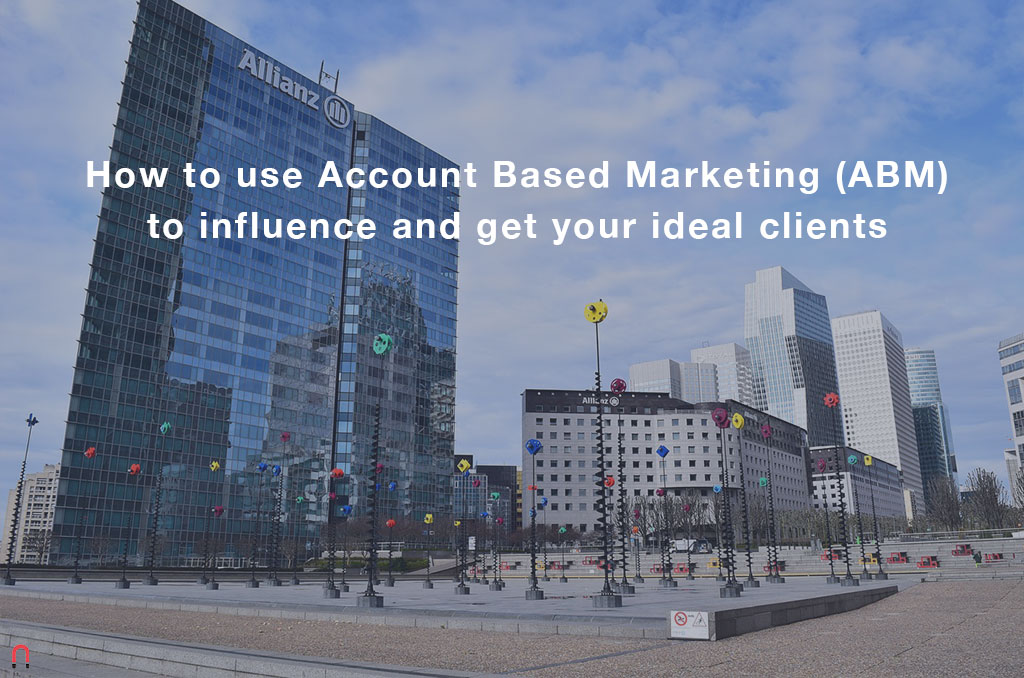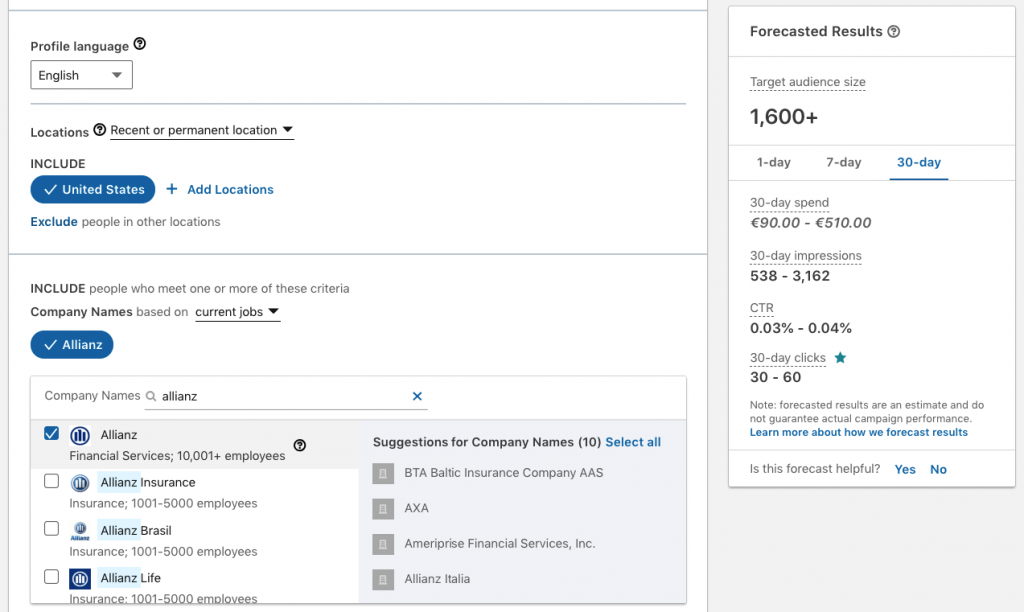How to use Account Based Marketing (ABM) to influence and get your ideal clients
 Dec 7, 2018 - Marcel Odena
Dec 7, 2018 - Marcel OdenaThe strategy of Account Based Marketing (ABM) is to identify a series of accounts or key companies to focus both marketing and sales efforts and thus maximize the chances of getting those accounts as customers . Both the CEO of your company, as the director of marketing and sales, known (or should known) the list of 100 companies that they would like to get as customers in the upcoming months. So, why not focus on getting these 100 companies as clients instead of spending energy generating thousands of leads from Marketing and also prospecting hundreds of prospects? This is basically the essence of the Account Based Marketing (ABM) strategy. To say that the ABM strategy is usually done in combination with the Inbound Marketing strategy, are complementary, they do not have to be exclusive.
The typical Inbound Marketing scenario
Let me roughly draw the usual scenario of a classic inbound marketing strategy. Assuming you are applying the good inbound marketing practices the following will happen:
- You will create quality content that will attract thousands of users to your website to solve their doubts, needs, thanks to the content.
- You will create documents of interest that users will download and in returnyou will get their data, in other words, leads!
- Through your lead scoring system you will give a score to each lead, which will also be re-evaluated as the user interacts with the digital assets of your company.
- Through your lead nurturing system you will make progress those key leads (those that meet the profile of your buyer persona) to advance through all phases of your sales cycle.
- When the lead meets certain conditions (scoring, is in a certain phase of the funnel, etc.) you will mark it in some way to “pass the baton” to sales.
At this moment Sales comes into play. In their Sales CRM, suddenly several marketing leads appear. At first, they are the best ones, leads with a desired professional profile and in a phase of the sales funnel quite advanced. And despite this … sales rejects the lead, or simply ignores it, which is the same. One way to let a lead die is this.
Does not this scenario seem absurd? Obviously not all leads that are passed to Sales have this treatment. Many are welcome, treated and sales are achieved, otherwise Inbound Marketing would not have triumphed.
But it is true that there is a percentage of leads generated that does not please Sales and does not progress. So, can we turn the issue around and start with the companies that please Sales (and the CEO) and focus on getting leads from those companies?
Tactics to deploy Account Based Marketing (ABM)
Notice that we are talking all the time of focusing efforts on those key accounts, so we must somehow be able to segment our campaigns to direct them to those key accounts.
There are 2 very clear segmentation techniques to implement Account Based Marketing:
1) Segment by the name of the target companies through advertising on LinkedIn.
The LinkedIn advertising platform allows to segment the users (members of Linkedin) by the companies that we want to target . Imagine that we have a list of 100 target companies, we introduce them in the segmentation section of the campaign and this will show the ads only to Linkedin members who work in those companies. Below you can see the section inside the Linkedin Campaign Manager in which the segmentation by company name is configured:

Additionally, we can apply other segmentation criteria to further narrow our ideal audience. This is highly recommended, especially if we are targeting large companies. Imagine a company that has 10,000 employees, if we did not apply any other criteria we would be showing ads to any of these 10,000 employees of the company, and obviously we are not interested in wasting advertising investment or annoying users with advertising that is not directed at them.
One criterion that we can apply to further define the segmentation is the “Position” of our buyer persona. Or if there are many different positions and we do not want to miss any of them, we can use the criterion of “Professional function”.
If you want more information you can consult the article about all targeting criteria available for LinkedIn campaigns.
2) Segment by the email of the prospects of the target companies
It is usual for the Sales department to work with prospects lists . They get some of these prospects from an investigation (sourcing), another source may be the purchase of such information, another may be a subset of the Inbound leads, etc.
Would it be ideal to be able to help sales influence those leads through marketing campaigns, right? Well, most Pay per Click (PPC) platforms have a segmentation method based on email. That is, we can upload a file to the PPC platform in question (eg LinkedIn, Google Ads, etc.) with the list of emails of the people we want to target. Once the system is loaded, it will try to match each email with the user.
Conceptually this method of segmentation makes sense, but on a practical level it has many drawbacks, to highlight:
- From the lists of emails that happen to us, many emails are not good (they are from mailboxes type info@company.com, they are obsolete, etc.)
- You have to have very large lists, on the order of thousands. With listings of hundreds of emails it does not usually work.
- The match ratio that the system can do (be it LinkedIn, Google Ads, Facebook Ads, etc.) is usually very low. Therefore, of 10,000 emails maybe you can only “ match” 1,500
The message in Account Based Marketing (ABM)
Once we are clear about which companies to segment and how to do it, the part of the message remains. What are we going to communicate with our campaigns?
It will depend on the state in which these companies are located within our sales cycle. Let’s imagine the extremes:
- Companies have never heard of our company: in this case it would be logical to start with several branding campaigns. We could use Video campaigns on LinkedIn, video on Youtube using Google Ads, etc. to make our company known. We could promote relevant articles of our blog, promote documents with a Top Of The Funnel (TOFU) approach, etc.
- Companies that already know your company, because maybe the sales team is already in contact. In these cases it is an opportunity for Marketing to contribute to influence the lower-middle part of the funnel (MOFU-BOFU). We could do several campaigns highlighting the strengths of our product/service, we could promote very BOFU documents, etc.
Conclusion
The Account Based Marketing (ABM) strategy is here to stay. It allows to complement the classic strategies of Inbound Marketing and improve sales closing rates, influencing prospects through several campaigns designed just for them. With the appearance of the functionality of segmenting by company on Linkedin, it opens the door to implementing ABM easily for thousands of advertisers who wish to do better B2B marketing and be relevant to their target audience



